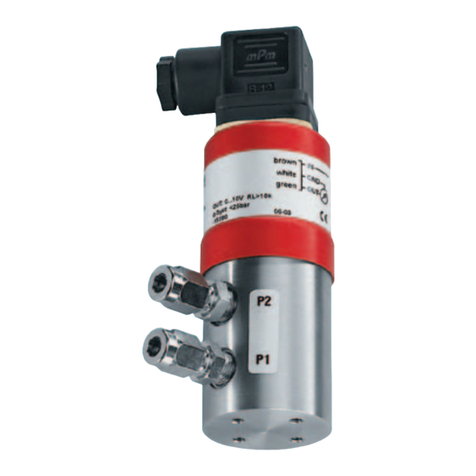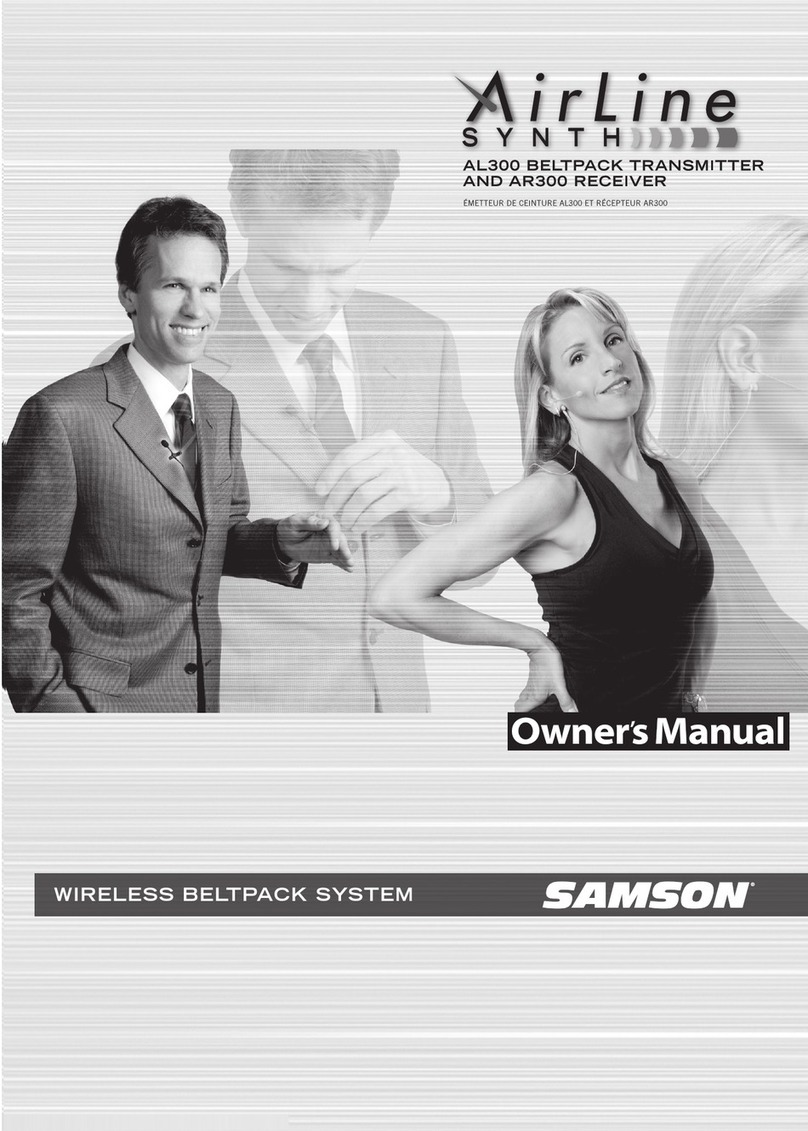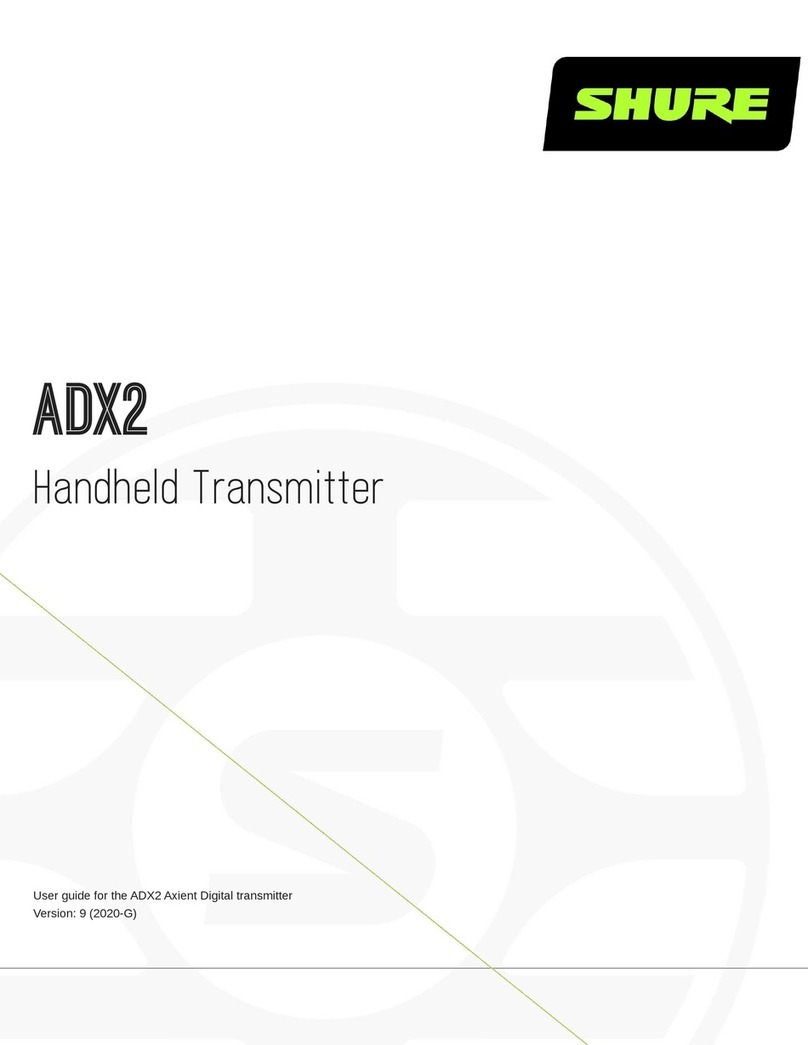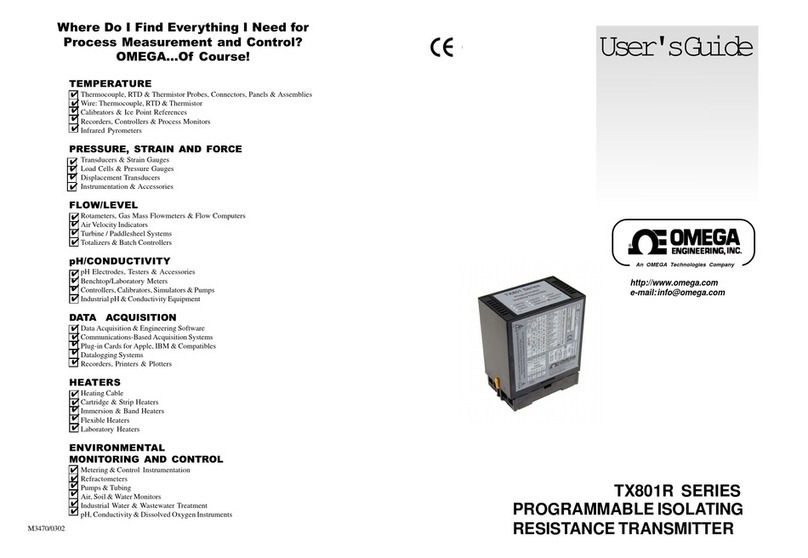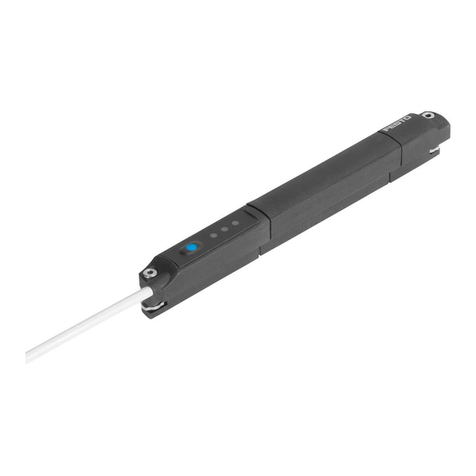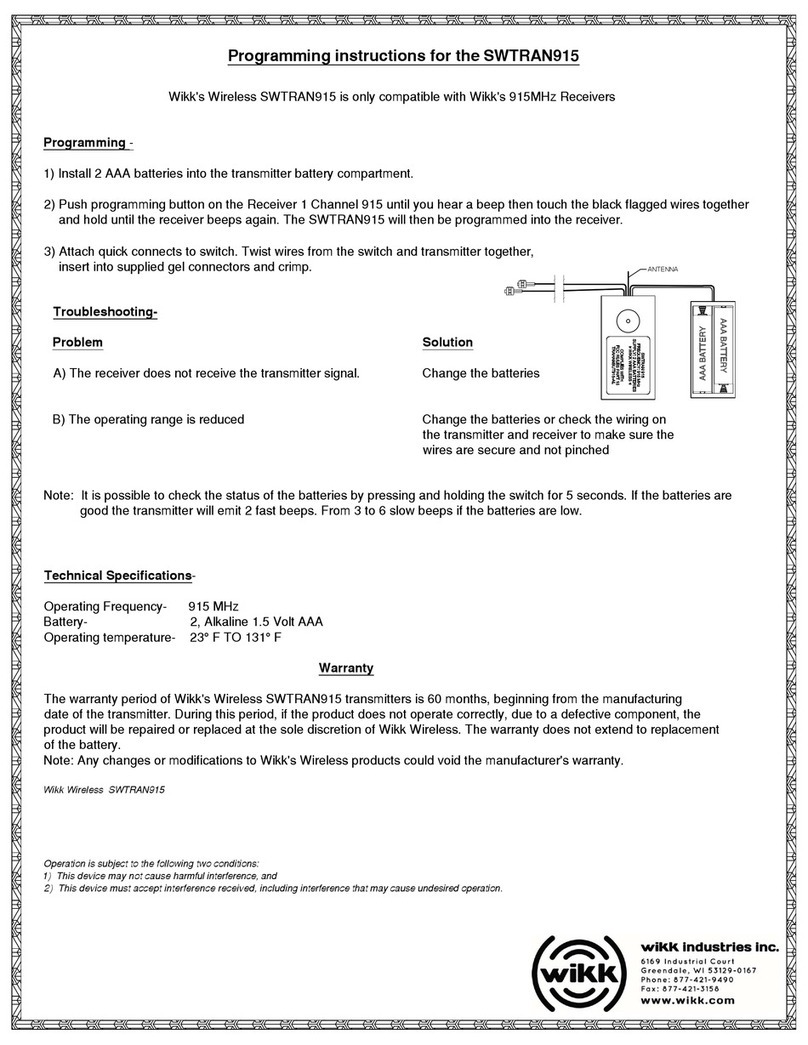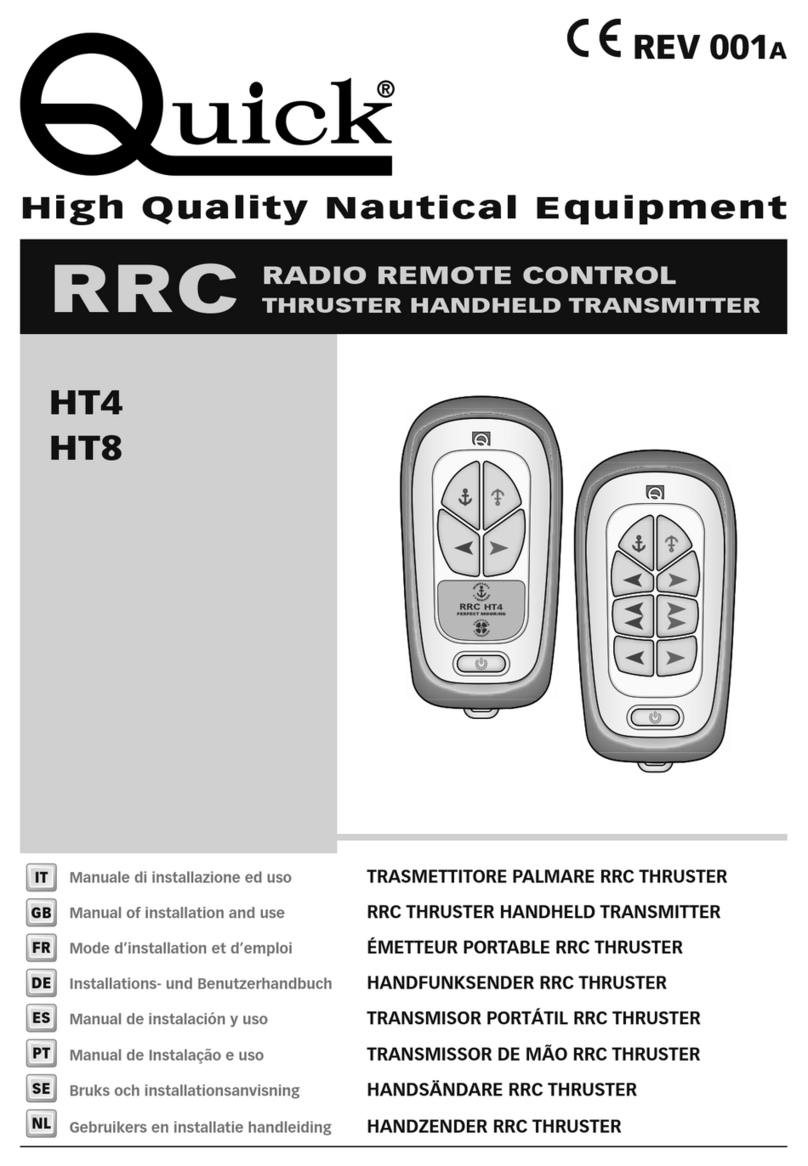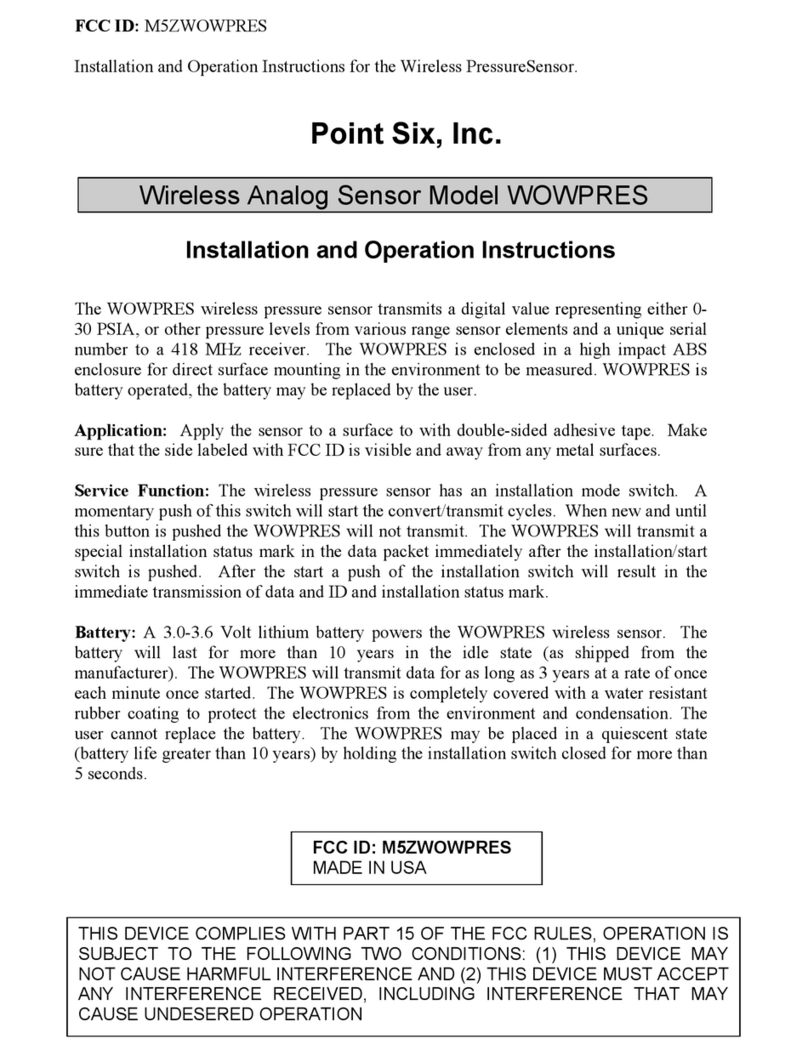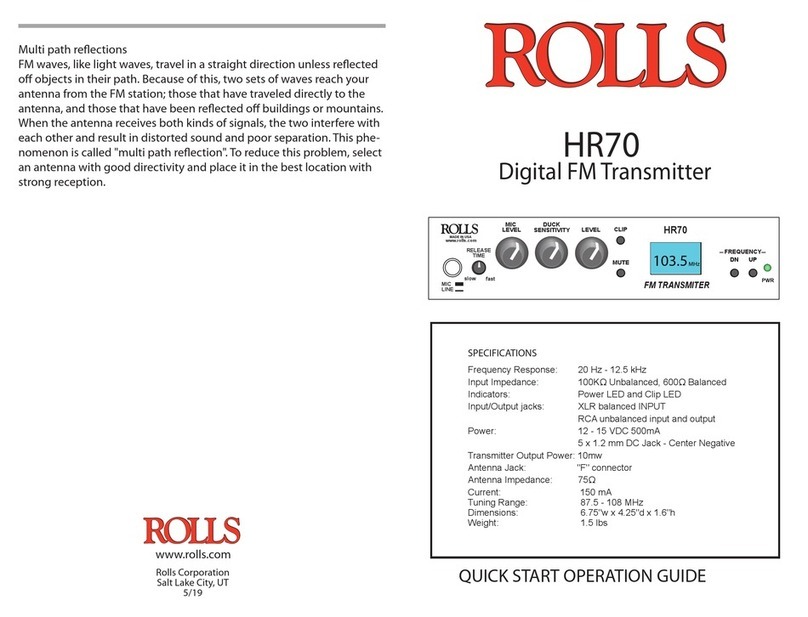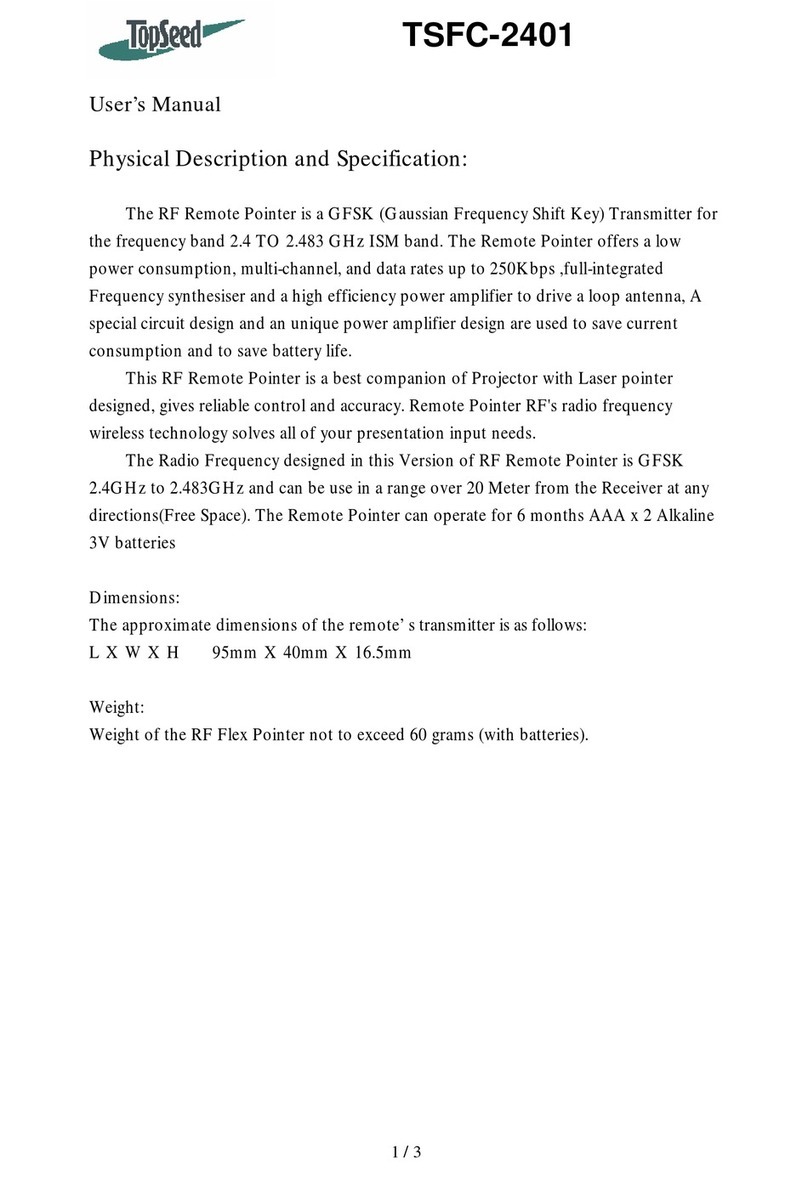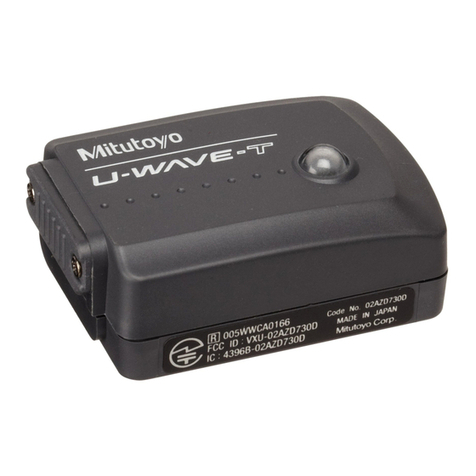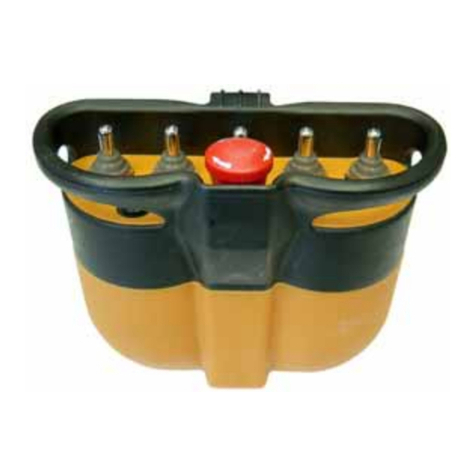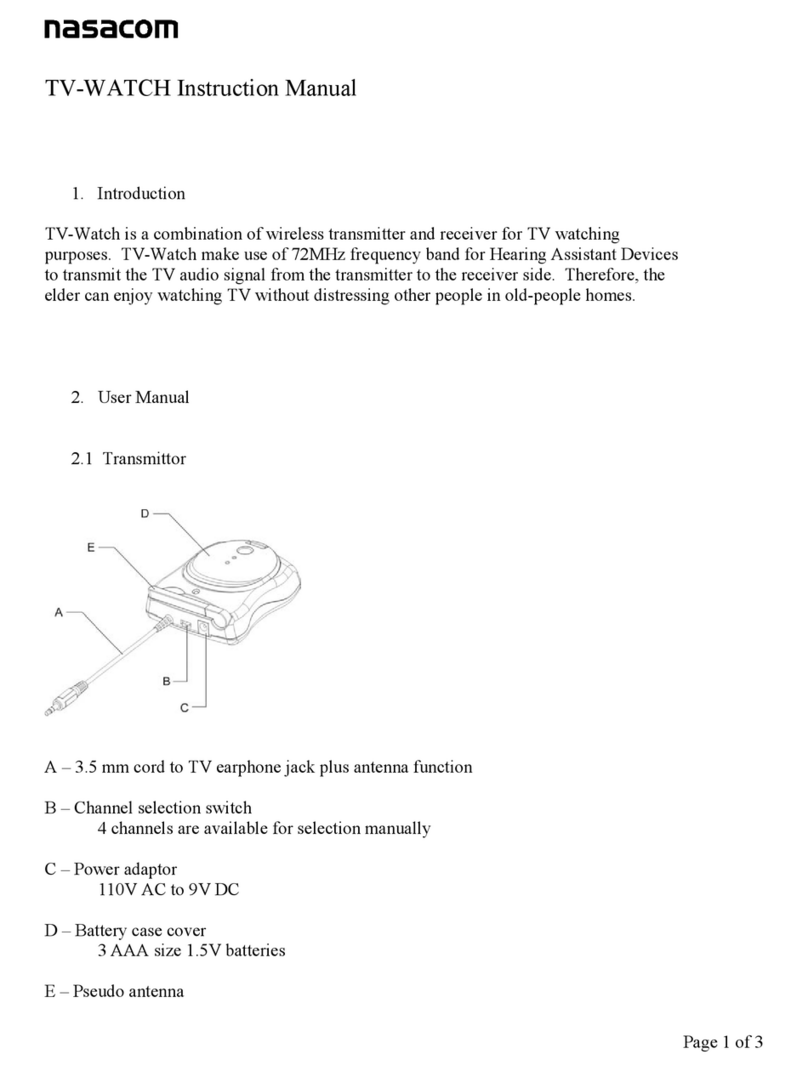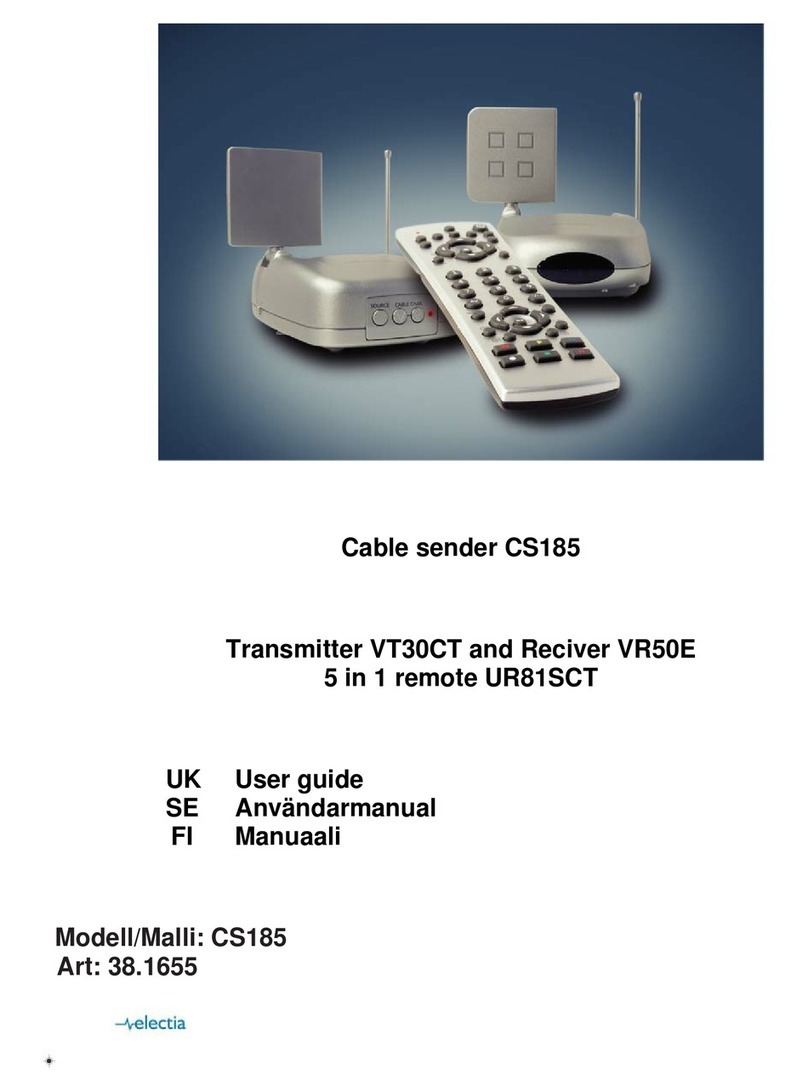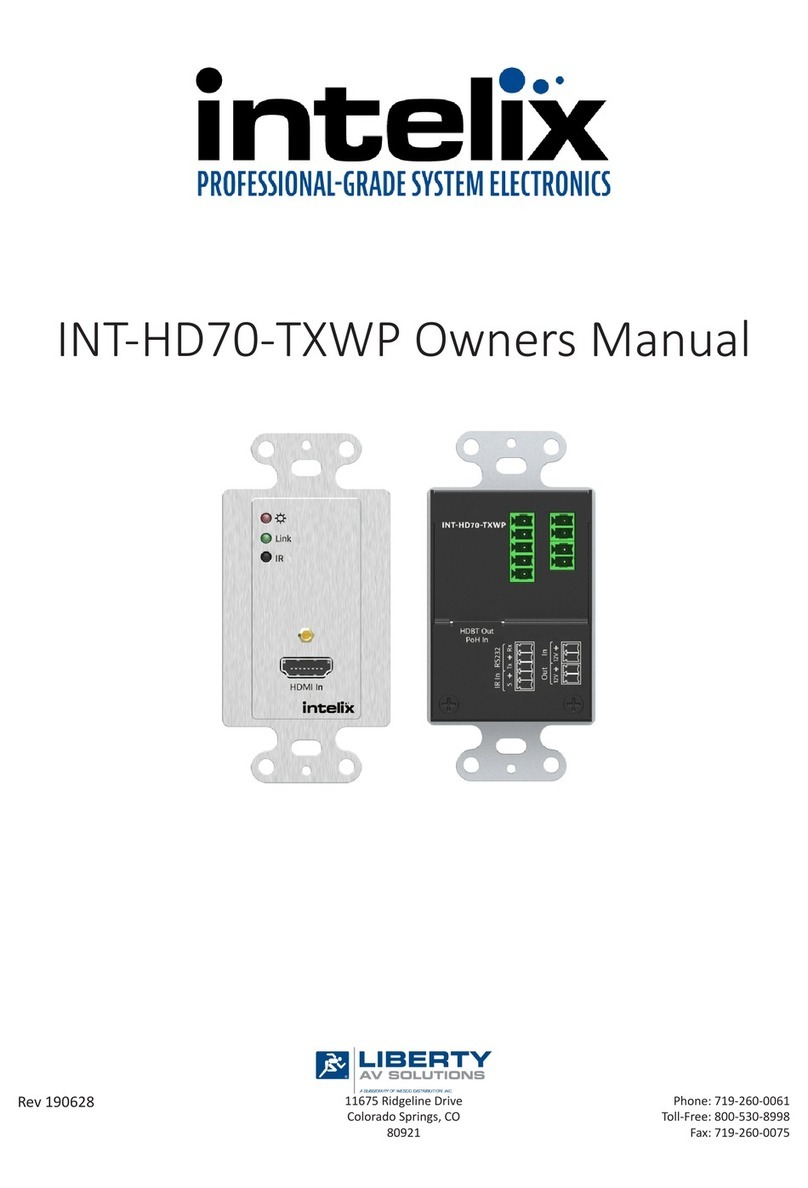S+S Regeltechnik PREMASGARD SHD652 Repair manual

PREMASGARD® SHD 652
D G F r
Herzlichen Glückwunsch!
Sie haben ein deutsches Qualitätsprodukt erworben.
Congratulations!
You have bought a German quality product.
Félicitations !
Vous avez fait l’acquisition d’un produit allemand de qualité.
Примите наши поздравления !
Вы приобрели качественный продукт, изготовленный в Германии.
D
Bedienungs- und Montageanleitung
Differenzdrucktransmitter, mit aktivem Ausgang,
incl. Montagewinkel
G
Operating Instructions, Mounting & Installation
Differential pressure transmitters, with active output,
including mounting angle
F
Notice d’instruction
Transmetteur de pression différentielle, avec sortie active,
y compris équerre de montage
r
Руководство по монтажу и обслуживанию
Преобразователь давления измерительный
дифференциальный, с активным выходом,
вкл. монтажный уголок
SHD 652
290 00-2011 02 ⁄ 2011
S+S REGELTECHNIK GMBH
PIRNAER STRASSE 20
90411 NÜRNBERG ⁄ GERMANY
FON +49 (0) 911 ⁄ 5 19 47- 0
FAX +49 (0) 911 ⁄ 5 19 47- 70
mail@SplusS.de
www.SplusS.de

PREMASGARD® SHD 652
D G F r
Maßzeichnung SHD 652
Dimensional drawing
Plan coté
Габаритный чертеж
Maßzeichnung Montagewinkel
Dimensional drawing Mounting angle
Plan coté Équerre de montage
Габаритный чертеж Монтажный уголок

Der Druckfühler ⁄ Druckdifferenzfühler PREMASGARD® SHD-652 dient zur Messung von
Drücken in gasförmigen und flüssigen Medien. Er wandelt die Messgröße in ein Normsignal
von 0 -10 V um, mit Prozessanschluss 2 x G 1 ⁄ 8 Innengewinde. Einsatz findet der Differenz-
drucktransmitter PREMASGARD® SHD-652 in Rohrleitungen und Hydrauliksystemen, im
Maschinen- und Anlagenbau sowie in der Gebäudeautomation.
Nicht geeignet für Ammoniak und Freone !
TECHNISCHE DATEN:
Spannungsversorgung: ............. 24 V AC (+15 % ⁄ - 10 %)
20 - 30 V DC (optional)
Messbereiche: ............................ siehe Tabelle
Ausgangssignal: ..........................0 -10 V, 3-Leiteranschluss
elektrischer Anschluss: ............ 0,25 - 1,5 mm²
Druckanschluss: .........................G 1 ⁄ 8 “ Innengewinde
Druckart: .....................................Differenzdruck
Messprinzip: ................................Hallsensor
Medium: .......................................flüssig und gasförmig
Mediumtemperatur: .................. - 10 ... + 80 °C
Umgebungstemperatur: ........... - 25 ... + 60 °C
Montage: ......................................Einbau beliebig, Membranstellung vertikal, DA nach unten
Gehäuse: ......................................Alu eloxiert
Abmaße: .......................................73 x 87x 65 mm
Anschlusskopf: ............................ Kunststoff, PG 9
messstoffberührende Teile: ..... Alu, Membran NBR
(nicht vollständig, siehe Datenblatt)
Lastwechsel: ...............................< 10 Hz
Ansprechzeit: ..............................< 5 ms
Klasse: ..........................................Linearität ± 1,5 %
Hyterese ± 1,5 %
Gesamtfehler: .............................< 3 %
Überlastbereich: .........................siehe Tabelle
Berstdruck: .................................30 bar
Isolationswiderstand: ................ ≥ 100 MOhm, bei 20 °C (500 V DC)
Schutzklasse: .............................III (nach EN 60 730)
Schutzart: .................................... IP 65 (nach EN 60 529) mit montierter Abdeckhaube
Normen: ......................................CE-Konformität,
elektromagnetische Verträglichkeit
nach EN 61 326 + A1 + A2,
EMV-Richtlinie 2004 ⁄ 108 ⁄ EC
D PREMASGARD® SHD 652
Anschlussbild SHD 652
Signal
S O
UB+
24V AC 20-30V DC
Ausgang
Druck 0-10V
GND
Typ ⁄ WG1 Messbereich max. Betriebsdruck Ausgang
SHD 652 - 90011 5 kPa (0 …50 mbar ) 10 bar 0 -10 V
SHD 652 - 91011 10 kPa (0 …100 mbar ) 10 bar 0 -10 V
SHD 652 - 92011 20 kPa (0 …200 mbar ) 10 bar 0 -10 V
SHD 652 - 93011 50 kPa (0 …500 mbar ) 20 bar 0 -10 V
SHD 652 - 94011 100 kPa (0 …1000 mbar ) 20 bar 0 -10 V

D Montage und Installation
ACHTUNG z u PREMASGARD® SHD 652
– Erst 15 Minuten nach Anlegen der Speisespannung ist der
stabile Betriebszustand erreicht!
– Poti a niemals verstellen.
– Bei flüssigen Medien mit Festkörperanteilen,
Mess-Zuleitungs-Inhalt ≥ 8 cm³
KALIBRIERUNG
Für kundenspezifische Ausgangs- und Nullpunktsignale
(Werkeinstellung: Maximaler Druck = max. Ausgangssignal).
NP = Nullpunkt-Einstellung
= Steilheit-Einstellung
Die Kalibrierung so
ll in Einbaulage vorgenommen werden.
Einbaulagevorschriften beachten.
VORGEHEN
– Versorgungsspannung anlegen (min. 15 Minuten).
– Zum gewünschten Druck bei Ausgangssignal 0 V bzw. 0 mA 10 %
des einzustellenden Druckbereichs addieren (Druckgeber Klasse
0,6 - besser 0,25 %). Mit NP-Poti 1V (max. 2V) bzw. 2 mA
(max. 4 mA) einstellen.
– 100% des gewünschten Enddruckes anlegen und mit
- Poti 10 V (min. 5 V), bzw. 20 mA (min. 10 mA) einstellen.
– Diesen Prozess zwei- bis dreimal wiederholen bis die
Werte innerhalb des Toleranzbereichs liegen.
– Alle Potis nach Kalibrierung wieder verlacken.
Entlüftungsschrauben bei flüssigen Medien
nach oben ausrichten, damit der Entlüftungsvorgang
einwandfrei erfolgen kann.

Als AGB gelten ausschließlich unsere sowie die gültigen „Allgemeinen Lieferbedingungen für Erzeugnisse und Leistungen der Elektro industrie“
(ZVEI Bedingungen) zuzüglich der Ergänzungsklausel „Erweiterter Eigentumsvorbehalt“.
Außerdem sind folgende Punkte zu beachten:
– Vor der Installation und Inbetriebnahme ist diese Anleitung zu lesen und die alle darin gemachten Hinweise sind zu beachten!
– Der Anschluss der Geräte darf nur an Sicherheitskleinspannung und im spannungslosen Zustand erfolgen. Um Schäden und Fehler am Gerät
(z.B. durch Spannungsinduktion) zu verhindern, sind abgeschirmte Leitungen zu verwenden, eine Parallelverlegung zu stromführenden Leitungen zu
vermeiden und die EMV- Richtlinien zu beachten.
– Dieses Gerät ist nur für den angegebenen Verwendungszweck zu nutzen, dabei sind die entsprechenden Sicherheitsvorschriften des VDE,
der Länder, ihrer Überwachungsorgane, des TÜV und der örtlichen EVU zu beachten.
Der Käufer hat die Einhaltung der Bau- und Sicherungsbestimmung zu gewährleisten und Gefährdungen aller Art zu vermeiden.
– Für Mängel und Schäden, die durch unsachgemäße Verwendung dieses Gerätes entstehen, werden keinerlei Gewährleistungen und Haftungen
übernommen.
– Folgeschäden, welche durch Fehler an diesem Gerät entstehen, sind von der Gewährleistung und Haftung ausgeschlossen.
– Die Installation der Geräte darf nur durch Fachpersonal erfolgen.
– Es gelten ausschließlich die technischen Daten und Anschlussbedingungen der zum Gerät gelieferten Montage- und Bedienungs anleitung,
Abweichungen zur Katalogdarstellung sind nicht zusätzlich aufgeführt und im Sinne des technischen Fortschritts und der stetigen Verbesserung
unserer Produkte möglich.
– Bei Veränderungen der Geräte durch den Anwender entfallen alle Gewährleistungsansprüche.
– Dieses Gerät darf nicht in der Nähe von Wärmequellen (z.B. Heizkörpern) oder deren Wärmestrom eingesetzt werden, eine direkte Sonnen-
einstrahlung oder Wärmeeinstrahlung durch ähnliche Quellen (starke Leuchte, Halogenstrahler) ist unbedingt zu vermeiden.
– Der Betrieb in der Nähe von Geräten, welche nicht den EMV- Richtlinien entsprechen, kann zur Beeinflussung der Funktionsweise führen.
– Dieses Gerät darf nicht für Überwachungszwecke, welche ausschließlich dem Schutz von Personen gegen Gefährdung oder Verletzung dienen und
nicht als Not-Aus-Schalter an Anlagen und Maschinen oder vergleichbare sicherheitsrelevante Aufgaben verwendet werden.
– Die Gehäuse- und Gehäusezubehörmaße können geringe Toleranzen zu den Angaben dieser Anleitung aufweisen.
– Veränderungen dieser Unterlagen sind nicht gestattet.
– Reklamationen werden nur vollständig in Originalverpackung angenommen.
Vor der Installation und Inbetriebnahme ist diese Anleitung zu lesen und die alle darin gemachten Hinweise sind zu beachten!
D Wichtige Hinweise

G PREMASGARD® SHD 652
The pressure sensor ⁄ differential pressure sensor PREMASGARD® SHD -652 is used for
pressure measurement in gaseous and liquid media. It converts the measurand into standard
signals of 0 -10 V. Process connection is 2 x G 1 ⁄ 8 " straight internal pipe thread. PREMAS-
GARD® SHD -652 differential pressure transmitters are applied in piping and hydraulic sys-
tems, in mechanical and plant engineering as well as in building automation.
Not applicable for ammonia and Freon !
TECHNICAL DATA:
Power supply: .............................. 24 V AC (+15 % ⁄ - 10 %)
20 - 30 V DC (optional)
Measuring ranges: ..................... see table
Output signal: ..............................0 -10 V, 3-wire connection
Electrical connection: ................0.25 - 1.5 mm²
Pressure connection: ................ G 1 ⁄ 8 " straight internal pipe thread
Type of pressure: ....................... differential pressure
Measuring principle: .................. Hall sensor
Medium: .......................................liquid or gaseous
Temperature of medium: .......... - 10 ... + 80 °C
Ambient temperature: ..............- 25 ... + 60 °C
Mounting: ..................................... installation arbitrary, membrane position vertical,
pressure connection downward
Enclosure: ....................................anodised aluminium
Dimensions: .................................73 x 87x 65 mm
Connecting head: ....................... plastic, PG 9
Medium contacting parts: ........aluminium, membrane NBR
(incomplete, see datasheet)
Load changes: .............................< 10 Hz
Response time: ...........................< 5 ms
Class: ............................................linearity ± 1.5 %
hysteresis ± 1.5 %
Total error: ..................................< 3 %
Overload range: ..........................see table
Bursting pressure: .....................30 bar
Insulating resistance: ................ ≥ 100 MOhm, at 20 °C (500 V DC)
Protection class: ....................... III (according to EN 60 730)
Protection type:..........................IP 65 (according to EN 60 529) with cover mounted
Standards: ..................................CE conformity,
electromagnetic compatibility
according to EN 61 326 + A1 + A2,
EMC directive 2004 ⁄ 108 ⁄ EC
Connecting diagram SHD 652
Type ⁄ WG1 Measuring Range Max. Operating Pressure Output
SHD 652 - 90011 5 kPa (0 …50 mbar ) 10 bar 0 -10 V
SHD 652 - 91011 10 kPa (0 …100 mbar ) 10 bar 0 -10 V
SHD 652 - 92011 20 kPa (0 …200 mbar ) 10 bar 0 -10 V
SHD 652 - 93011 50 kPa (0 …500 mbar ) 20 bar 0 -10 V
SHD 652 - 94011 100 kPa (0 …1000 mbar ) 20 bar 0 -10 V
Signal
S O
UB+
24V AC 20-30V DC
Output
pressure 0-10V
GND

G Mounting and Installation
ATTENTION specific to PREMASGARD® SHD 652
– A stable operating condition is reached not until 15 minutes after
applying supply voltage!
– Never change potentiometer setting.
– In case of liquid media with solid particle fractions in suspension,
content of measurement line ≥ 8 cm³
CALIBRATION
For customer-specific output and zero point signals
(Factory setting: maximum pressure = maximum output signal).
NP = Zero point setting
= Rate-of-rise setting
Calibration shall be done in mounting position.
Adhere to instructions regarding mounting position.
PROCEDURE
– Apply supply voltage (minimum 15 minutes).
– At output signal 0 V respectively 0 mA add to the desired pressure
10 % of the pressure range to be preset (pressure pick-up class
0.6 – better 0.25 %). By zero point potentiometer NP adjust to
1 V (max. 2 V) or 2 mA (max. 4 mA) respectively.
– Apply 100 % of the desired end pressure and
- Adjust to 10 V (min. 5 V) respectively 20 mA (min. 10 mA) using
the potentiometer.
– Repeat this process two to three times until values lie within the
tolerance range.
– Lacquer-seal all potentiometers again after calibration.
In case of liquid media direct vent screws
upward to enable proper ventilation.

G General notes
Our “General Terms and Conditions for Business“ together with the “General Conditions for the Supply of Products and Services of the Electrical
and Electronics Industry“ (ZVEI conditions) including supplementary clause “Extended Retention of Title“ apply as the exclusive terms and conditions.
In additionIn addition, the following points are to be observed:
–
These instructions must be read before installation and putting in operation and all notes provided therein are to be regarded!
–
Devices must only be connected to safety extra-low voltage and under dead-voltage condition. To avoid damages and errors the device
(e.g. by voltage induction) shielded cables are to be used, laying parallel with current-carrying lines is to be avoided, and EMC directives are to
be observed.
–
This device shall only be used for its intended purpose. Respective safety regulations issued by the VDE, the states, their control authorities,
the TÜV and the local energy supply company must be observed. The purchaser has to adhere to the building and safety regulations and has to
prevent perils of any kind.
–
No warranties or liabilities will be assumed for defects and damages arising from improper use of this device.
–
Consequential damages caused by a fault in this device are excluded from warranty or liability.
–
These devices must be installed by authorised specialists only.
–
The technical data and connecting conditions of the mounting and operating instructions delivered together with the device are exclusively
valid. Deviations from the catalogue representation are not explicitly mentioned and are possible in terms of technical progress and continuous
improvement of our products.
–
In case of any modifications made by the user, all warranty claims are forfeited.
–
This device must not be installed close to heat sources (e.g. radiators) or be exposed to their heat flow. Direct sun irradiation or heat
irradiation by similar sources (powerful lamps, halogen spotlights) must absolutely be avoided.
–
Operating this device close to other devices that do not comply with EMC directives may influence functionality.
–
This device must not be used for monitoring applications, which solely serve the purpose of protecting persons against hazards or injury,
or as an EMERGENCY STOP switch for systems or machinery, or for any other similar safety-relevant purposes.
–
Dimensions of enclosures or enclosure accessories may show slight tolerances on the specifications provided in these instructions.
–
Modifications of these records are not permitted.
–
In case of a complaint, only complete devices returned in original packing will be accepted.
These instructions must be read before installation and putting in operation and all notes provided therein are to be regarded!

F PREMASGARD® SHD 652
La sonde PREMASGARD® SHD -652, sonde de pression ⁄ sonde de différence de pression,
sert à la mesure de pressions en milieux gazeux et liquides. Elle convertit la grandeur
de mesure en un signal normalisé de 0 - 10 V, raccordement process avec taraudage
2 x G 1 ⁄ 8 ". Elle est conçue pour la mesure de pressions en milieux gazeux et liquides.
Le transmetteur de pression différentielle PREMASGARD® SHD - 652 est utilisé dans les
tuyauteries et les systèmes hydrauliques, dans la construction mécanique ainsi que dans la
gestion technique du bâtiment.
Ne pas utiliser pour gaz ammoniacs et fréons !
CARACTÉRISTIQUES TECHNIQUES:
Tension d’alimentation: ..............24 V ca (+15 % ⁄ - 10 %)
20 - 30 V cc (en option)
Plages de mesure: .....................voir tableau
Signal de sortie:..........................0 -10 V, 3 fils
Raccordement électrique: ........0,25 - 1,5 mm²
Prise de pression: ......................taraudage G 1 ⁄ 8 "
Type de pression: ....................... pression différentielle
Principe de mesure: ................... capteur à effet Hall
Milieu: ...........................................liquide ou gazeux
Température du milieu: .............- 10 ... + 80 °C
Température ambiante: ............ - 25 ... + 60 °C
Montage: ......................................au choix, membrane en position verticale,
raccord de pression dirigé vers le bas
Boîtier: .........................................aluminium anodisé
Dimensions: .................................73 x 87x 65 mm
Tête de raccordement: ............. matière plastique, PG 9
Parties en contact
avec le milieu: ..............................aluminium, membrane NBR
(liste non exhaustive, voir fiche technique)
Alternance de charge:...............< 10 Hz
Temps de réponse:..................... < 5 ms
Classe: ..........................................linéarité ± 1,5 %
hystérésis ± 1,5 %
Dérive totale: ..............................< 3 %
Plage de surcharge:................... voir tableau
Pression d’éclatement: ............. 30 bars
Résistance d’isolement: ............≥ 100 Mohm, à 20 °C (500 V cc)
Classe de protection: ................ III (selon EN 60 730)
Indice de protection: ..................IP 65 (selon EN 60 529)
avec capot de recouvrement monté
Normes: ......................................conformité CE,
compatibilité électromagnétique
selon EN 61 326 + A1 + A2,
Directive « CEM » 2004 ⁄ 108 ⁄ CE
Schéma de raccordement SHD 652
Désignation ⁄ WG1 Plage de mesure pression de service max. Sortie
SHD 652 - 90011 5 kPa (0 …50 mbars ) 10 bars 0 -10 V
SHD 652 - 91011 10 kPa (0 …100 mbars ) 10 bars 0 -10 V
SHD 652 - 92011 20 kPa (0 …200 mbars ) 10 bars 0 -10 V
SHD 652 - 93011 50 kPa (0 …500 mbars ) 20 bars 0 -10 V
SHD 652 - 94011 100 kPa (0 …1000 mbars ) 20 bars 0 -10 V
Signal
S O
UB+
24V AC 20-30V DC
Output
pressure 0-10V
GND

F Montage et installation
ATTENTION ! Consignes pour PREMASGARD® SHD 652
– Le transmetteur atteint son plein régime de fonctionnement
seulement 15 minutes après sa mise sous tension !
– Ne jamais dérégler le potentiomètre a !
– Pour les milieux liquides transportant des particules de corps
solides, volume du tuyau de mesure ≥ 8 cm3
ÉTALONNAGE
Pour les signaux de sortie et de point zéro spécifiques au client
(réglage en usine : pression maximale = signal de sortie max.).
NP = réglage du point zéro
= réglage de la pente
L’étalonnage doit être effectué avec appareil en position réellement montée.
Veillez à respecter les instructions relatives à la position de montage.
MARCHE À SUIVRE
– Appliquer la tension d’alimentation à l’appareil
(15 minutes au minimum).
– Ajouter, à la valeur de pression désirée pour un signal de sortie de
0 V ou 0 mA, 10 % de la plage de pression devant être définie
(capteur de pression de classe 0,6 - mieux 0,25 %).
Ajuster 1 V (2 V max.) ou 2 mA (4 mA max.) avec le potentiomètre « NP ».
– Appliquer le 100 % de la pression finale désirée et régler
10 V (5 V min.) ou 20 mA (10 mA min.) avec le potentiomètre .
– Répéter ce processus deux à trois fois, jusqu’à ce que les valeurs
ajustées restent dans la plage de tolérance définie.
– Une fois l‘étalonnage effectué, sceller tous les potentiomètres
avec de la laque.
Pour les milieux liquides, orienter les vis d’évacuation
de l’air vers le haut pour assurer une bonne évacuation
de l’air.

F Généralités
Seules les CGV de la société S+S, les « Conditions générales de livraison du ZVEI pour produits et prestations de l’industrie électronique » ainsi que la
clause complémentaire « Réserve de propriété étendue » s’appliquent à toutes les relations commerciales entre la société S+S et ses clients.
Il convient en outre de respecter les points suivants :
– Avant de procéder à toute installation et à la mise en service, veuillez lire attentivement la présente notice et toutes les consignes qui y sont
précisées !
– Les raccordements électriques doivent être exécutés HORS TENSION. Ne branchez l’appareil que sur un réseau de très basse tension de sécurité.
Pour éviter des endommagements ⁄ erreurs sur l’appareil (par ex. dus à une induction de tension parasite), il est conseillé d’utiliser des câbles
blindés, ne pas poser les câbles de sondes en parallèle avec des câbles de puissance, les directives CEM sont à respecter.
– Cet appareil ne doit être utilisé que pour l’usage qui est indiqué en respectant les règles de sécurité correspondantes de la VDE, des Länders,
de leurs organes de surveillance, du TÜV et des entreprises d’approvisionnement en énergie locales. L’acheteur doit respecter les dispositions
relatives à la construction et à la sécurité et doit éviter toutes sortes de risques.
– Nous déclinons toute responsabilité ou garantie pour les défauts et dommages résultant d’une utilisation inappropriée de cet appareil.
– Nous déclinons toute responsabilité ou garantie au titre de tout dommage consécutif provoqué par des erreurs commises sur cet appareil.
– L’installation des appareils doit être effectuée uniquement par un spécialiste qualifié.
– Seules les données techniques et les conditions de raccordement indiquées sur la notice d’instruction accompagnant l’appareil sont applicables,
des différences par rapport à la présentation dans le catalogue ne sont pas mentionnées explicitement et sont possibles suite au progrès technique
et à l’amélioration continue de nos produits.
– En cas de modifications des appareils par l’utilisateur, tous droits de garantie ne seront pas reconnus.
– Cet appareil ne doit pas être utilisé à proximité des sources de chaleur (par ex. radiateurs) ou de leurs flux de chaleur, il faut impérativement éviter
un ensoleillement direct ou un rayonnement thermique provenant de sources similaires (lampes très puissantes, projecteurs à halogène).
– L’utilisation de l’appareil à proximité d’appareils qui ne sont pas conformes aux directives « CEM » pourra nuire à son mode de fonctionnement.
– Cet appareil ne devra pas être utilisé à des fins de surveillance qui visent uniquement à la protection des personnes contre les dangers ou les
blessures ni comme interrupteur d’arrêt d’urgence sur des installations ou des machines ni pour des fonctions relatives à la sécurité comparables.
– Il est possible que les dimensions du boîtier et des accessoires du boîtier divergent légèrement des indications données dans cette notice.
– Il est interdit de modifier la présente documentation.
– En cas de réclamation, les appareils ne sont repris que dans leur emballage d’origine et si tous les éléments de l’appareil sont complets.
Avant de procéder à toute installation et à la mise en service, veuillez lire attentivement la présente notice et toutes les consignes qui
y sont précisées !

r PREMASGARD® SHD 652
Измерительные преобразователи давления PREMASGARD® SHD-652 предназначены для
измерения повышенного, пониженного и дифференциального давления в газообразных и
жидких средах. Измеренные величины преобразуются в сигналы 0 - 10 В. Монтаж - 2 x
G 1 ⁄ 8, резьба внутренняя. Находит применение в трубопроводах и гидравлических систе-
мах, в машино- и аппаратостроении, а также при автоматизации зданий.
Непригоден для аммиака и фреонов!
ТЕХНИЧЕСКИЕ ДАННЫЕ:
Напряжение питания: ...............24 B перем. тока (+15 % ⁄ - 10 %)
20 - 30 B пост. тока (опционально)
Диапазон измерения: ............... см. таблицу
Выходной сигнал: ...................... 0 - 10 B, по трехпроводной схеме
Эл. подключение: ...................... 0,25 - 1,5 мм²
Подвод давления: .....................G 1 ⁄ 8 " внутренняя резьба
Тип давления: .............................дифференциальное
Принцип измерения:................. датчик Холла
Среда: ..........................................жидкая или газообразная
Температура среды:..................- 10 ... + 80 °C
Температура окружающей
среды: ..........................................- 25 ... + 60 °C
Монтаж: ....................................... произвольный способ установки,
вертикальное расположение мембраны,
штуцером давления вниз
Корпус: .........................................анодированный алюминий
Размеры: .....................................73 x 87 x 65 мм
Присоединительная головка: ....
пластик, PG 9
Детали, соприкасающиеся
со средой: ................................... алюминий, мембрана – NBR (нитрил-бутадиен-каучук)
(остальное – см. спецификацию)
Изменение нагрузки: ................ < 10 Гц
Время срабатывания: ...............< 5 мс
Класс: ..........................................нелинейность ± 1,5 %
гистерезис ± 1,5 %
Суммарная погрешность: ........ < 3 %
Давление перегрузки: .............. см. таблицу
Давление разрушения: ............30 бар
Сопротивление изоляции:.......≥ 100 МОм, при 20 °C (500 B пост. тока)
Класс защиты: ...........................III (согласно EN 60 730)
Степень защиты: .......................IP 65 (согласно EN 60 529) со смонтированной крышкой
Нормы: .........................................соответствие CE-нормам,
электромагнитная совместимость
согласно EN 61 326 + A1 + A2,
директива 2004 ⁄ 108 ⁄ EC
Схема соединения SHD 652
Signal
S O
UB+
24V AC 20-30V DC
Output
pressure 0-10V
GND
Тип ⁄ группа товаров 1 Диапазон измерения Макс. рабочее давление Выход
SHD 652 - 90011 5 кПа (0 …50 мбар ) 10 бар 0 -10 В
SHD 652 - 91011 10 кПа (0 …100 мбар ) 10 бар 0 -10 В
SHD 652 - 92011 20 кПа (0 …200 мбар ) 10 бар 0 -10 В
SHD 652 - 93011 50 кПа (0 …500 мбар ) 20 бар 0 -10 В
SHD 652 - 94011 100 кПа (0 …1000 мбар ) 20 бар 0 -10 В

r Монтаж и подключение
ВАЖНЫЕ ЗАМЕЧАНИЯ ДЛЯ PREMASGARD® SHD 652
– Устойчивый рабочий режим устанавливается через 15 минут
после подачи питающего напряжения!
– Не изменяйте настройку потенциометра «a»
– Для жидких сред с твердыми частицами: объем измерительного
участка подводящего трубопровода ≥ 8 cm³
КАЛИБРОВКА
Для настройки специальных выходных сигналов и положения нуля
(заводская настройка: макс. давление = макс. выходному сигналу).
NP = настройка нуля
= настройка наклона характеристики
Калибровку следует производить в монтажном положении.
Необходимо соблюдать предписания, относящиеся к монтажному
положению.
ПОСЛЕДОВАТЕЛЬНОСТЬ ДЕЙСТВИЙ
– Включить питающее напряжение (и выждать не менее 15 минут).
–
К требуемому давлению при выходном сигнале 0 В или 0 мА прибавить
10% настраиваемого диапазона давления (датчик давления класса
0,6 – не хуже 0,25%). Потенциометром настройки нуля (NP) установить
1 В (не более 2 В) или 2 мА (не более 4 мА).
– Приложить 100% требуемого конечного давления,
потенциометром настройки наклона
- установить 10 В (не менее 5 В) или 20 мА (не менее 10 мА).
– Повторить вышеперечисленные действия от 2 до 3 раз,
добившись нахождения значений в пределах допуска.
– После калибровки все потенциометры снова покрыть лаком.
Винты выпуска воздуха в случае жидких сред должны
располагаться сверху, чтобы гарантировать успешное
удаление газообразной фазы.

r Указания к продуктам
В качестве Общих Коммерческих Условий имеют силу исключительно наши Условия, а также действительные «Общие условия поставки продукции
и услуг для электрической промышленности» (ZVEI) включая дополнительную статью «Расширенное сохранение прав собственности».
Помимо этого, следует учитывать следующие положения:
– Перед установкой и вводом в эксплуатацию следует прочитать данное руководство; должны быть учтены все приведенные в нем указания!
– Подключение прибора должно осуществляться исключительно к безопасно малому напряжению и в обесточенном состоянии.
Во избежание повреждений и отказов (например, вследствие наводок) следует использовать экранированную проводку, избегать
параллельной прокладки токоведущих линий и учитывать предписания по электромагнитной совместимости.
– Данный прибор следует применять только по прямому назначению, учитывая при этом соответствующие предписания VDE
(союза немецких электротехников), требования, действующие в Вашей стране, инструкции органов технического надзора и местных
органов энергоснабжения. Надлежит придерживаться требований строительных норм и правил, а так же техники безопасности и
избегать угроз безопасности любого рода.
– Мы не несем ответственности за ущерб и повреждения, возникающие вследствие неправильного применения наших устройств.
– Ущерб, возникший вследствие неправильной работы прибора, не подлежит устранению по гарантии.
– Установка приборов должна осуществляться только квалифицированным персоналом.
– Действительны исключительно технические данные и условия подключения, приведенные в поставляемых с приборами руководствах
по монтажу и эксплуатации. Отклонения от представленных в каталоге характеристик дополнительно не указываются, несмотря на их
возможность в силу технического прогресса и постоянного совершенствования нашей продукции.
– В случае модификации приборов потребителем гарантийные обязательства теряют силу.
– Не разрешается использование прибора в непосредственной близости от источников тепла (например, радиаторов отопления)
или создаваемых ими тепловых потоков; следует в обязательном порядке избегать попадания прямых солнечных лучей или теплового
излучения от аналогичных источников (мощные осветительные приборы, галогенные излучатели).
– Эксплуатация вблизи оборудования, не соответствующего нормам электромагнитной совместимости (EMV), может влиять на работу
приборов.
– Недопустимо использование данного прибора в качестве устройства контроля ⁄ наблюдения, служащего исключительно для защиты
людей от травм и угрозы для здоровья ⁄ жизни, а также в качестве аварийного выключателя устройств и машин или для аналогичных задач
обеспечения безопасности.
– Размеры корпусов и корпусных принадлежностей могут в определённых пределах отличаться от указанных в данном руководстве.
– Изменение документации не допускается.
– В случае рекламаций принимаются исключительно цельные приборы в оригинальной упаковке.
Перед установкой и вводом в эксплуатацию следует прочитать данное руководство; должны быть учтены все приведенные в нем указания!

PREMASGARD® SHD 652
D G F r
Irrtümer und technische Änderungen vorbehalten.
Errors and technical changes excepted.
Sous réserve d’erreurs et de modifications techniques.
Возможны ошибки и технические изменения.
© Copyright by S+S Regeltechnik GmbH
Nachdruck, auch auszugsweise, nur mit Genehmigung von S+S Regeltechnik GmbH gestattet.
Reprints, in part or in total, are only permitted with the approval of S+S Regeltechnik GmbH.
La reproduction des textes même partielle est uniquement autorisée après accord de la société S+S Regeltechnik GmbH.
Перепечатка, в том числе в сокращенном виде, разрешается лишь с согласия S+S Regeltechnik GmbH.

PREMASGARD® SHD 652
D G F r
This manual suits for next models
5
Table of contents
Languages:
Other S+S Regeltechnik Transmitter manuals
